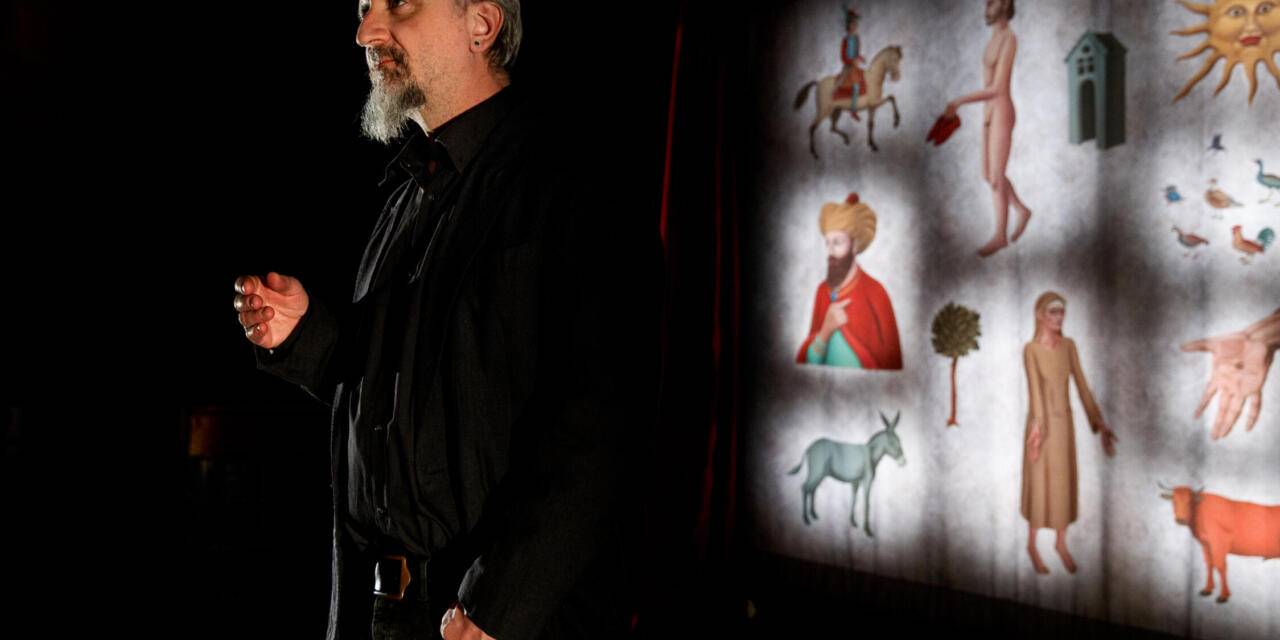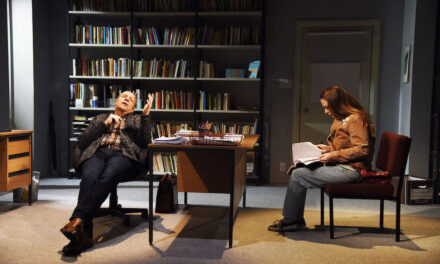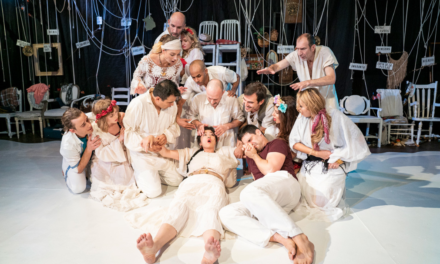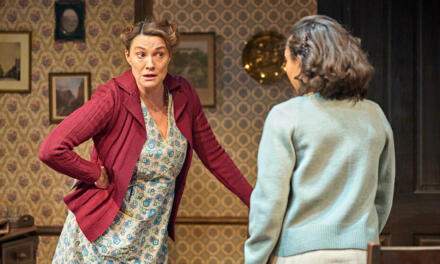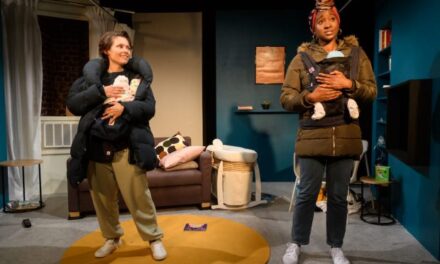Writer, actor, and director Ascanio Celestini is one of Italy’s most celebrated theatrical storytellers, a genre much loved by Italian audiences of all ages. For me, Dario Fo was the undisputed champion, while Marco Baliani, Davide Enia, Giuliana Musso, Marco Paolini, among others, continue in his wake. Celestini, born and brought up in Rome, started his career in the late Nineties and today draws large audiences in the many towns and cities where he performs on tour. His monologues reflect a particular interest in Italian twentieth-century history and social and political issues, sometimes bringing significant historical moments vividly back to life. In 2004 at the Venice Theatre Biennale, I was blown away by his play, Scemo di Guerra (War’s Idiot), in which he dramatized his own father’s stories about his experiences in World War Two. The performer’s charismatic stage presence and the magic evoked by the images, sounds and rhythms of his story were remarkable. Still, let’s focus on the show he is currently touring (from December 2023 to spring 2024). Its title, Rumba. The Donkey and the Ox in Saint Francis’s Nativity in a Supermarket Carpark, for reasons of space, will be referred to from now on as simply, Rumba. The latter presumably alludes to the eponymous dance invented in Cuba at the end of the 19th century, in a period when slavery was being abolished and people expressed their newly-found freedom through this sensual dance, involving a close rapport between the two dancers. In this play, accompanied by Gianluca Casadei, on the accordion and a keyboard, and drawings of Saint Francis’s life projected on a panel by Franco Biaggioni, Celestini turns his attention to Saint Francis of Assisi, the patron saint of animals and founder of the Catholic Church’s Franciscan Order. Incidentally, in 1979, Pope John Paul II made Saint Francis Patron Saint of Ecology. Throughout the show, which I caught in February at Milan’s Carcano theatre, the play’s focus continually shifted between the Middle Ages and the contemporary period. On one hand, Celestini entertained us with episodes from Saint Francis’s adventurous, early life as a soldier, a prisoner and a builder, which, after his religious conversion, was followed by his choice to renounce all earthly possessions and power in order to lead a life of ascetic poverty. On the other, moving, often dramatic, stories of contemporary figures such as travelers, migrants, refugees and prison inmates jostled for our attention. I was captivated by the writer-author’s deftly honed narrative techniques, including rapid shifts in perspective, a raft of linguistic registers, a rhythmic, sometimes frantic delivery and continual questions addressed to the audience. Here is an artist who has spent thirty years perfecting his craft as a storyteller. Having recalled how Saint Francis was the inventor of the first Nativity scene in a church in Graccio in the region of Lazio in 1223, exactly 800 years ago last year, Celestini asked what kind of nativity the Saint would have built today among the trash of a supermarket parking lot? A myriad of such questions aim to stimulate our imagination, inviting us to transform in our mind’s eye the everyday reality around us and in so doing ponder whether it is possible to change contemporary society, which is so rife with injustice and people abandoned on the edge. I was left wondering whether Saint Francis would have actually survived in our Western European consumer society. And if he had, how exactly would he have fared?
This post was written by the author in their personal capacity.The opinions expressed in this article are the author’s own and do not reflect the view of The Theatre Times, their staff or collaborators.
This post was written by Margaret Rose.
The views expressed here belong to the author and do not necessarily reflect our views and opinions.

